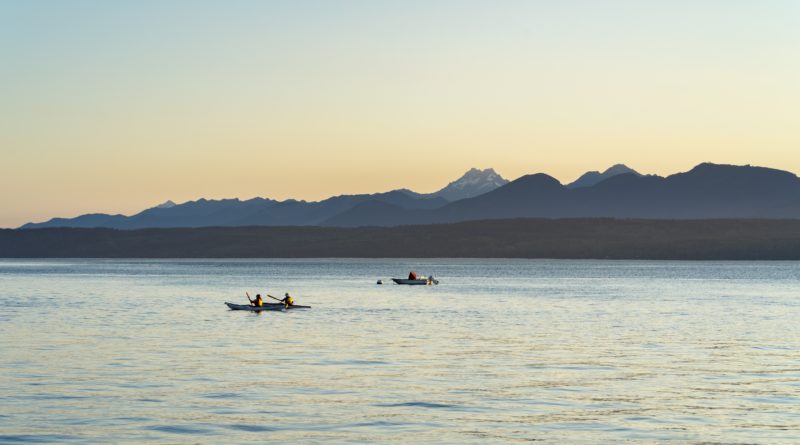Beginner’s Guide to Kayaking
Kayaking is fun! It can be enjoyed as a sport or a leisurely activity by anyone, and offers both a great way to stay in shape and a great way to relax. Whether you’ve already started kayaking or just want to learn a little about it, please use this guide to help you understand more about kayaking.
Basic kayak terms
Basic kayak terms referring to the kayak itself include bow, stern, deck, cockpit, hatch, hull, keel, and bulkhead.
The bow is the front of the kayak, while the stern is the rear. The deck refers to the top of kayak. The cockpit is the opening where the paddler sits, while the hatch refers to the compartment for stowing gear. The hull is the body of the kayak, and the keel, also known as the center-line is the part that runs along the hull from bow to stern. The bulkhead is a vertical partition inside the kayak. It’s usually made of foam. It serves two purposes. It reinforces the hull and aids flotation.
Basic kayak equipment
Some of the most common kayak equipment includes the paddle, life jacket or personal flotation device (PFD), helmet, bilge pump, and spray skirt.
The paddle is a pole with blades used to propel and maneuver the kayak. Kayaking paddles come in multiple styles and sizes. Kayaker size and paddling style play a part in determining which type of paddle will be used.
Life jackets are one of the most important pieces of equipment for kayakers to have. They are required by law in most bodies of water, and proper fit is vital. Make sure the life jacket you buy is Coastguard-approved. While not required by law, another important piece of safety equipment is a helmet. Kayakers can choose helmets that reflect their style and personal tastes if they wish. Helmets are now available in a wide variety of colors and designs. In addition to the basic kayaking style helmet, there are helmets which include protection for the face. These resemble football helmets and are used when extra protection is required.
A bilge pump is a hand pump used to remove large amounts of water from the inside of the kayak.
A spray skirt is a watertight skirt worn by the paddler that attaches around the cockpit, forming a seal to prevent water from filling the kayak.
Check out ____ for a more in depth look at kayaking equipment.
Questions to consider when choosing a kayak
- Where do I plan to kayak?
- What size or length of kayak is ideal for me?
- How will I transport the kayak?
- How heavy is the kayak?
- Does the kayak have a weight limit?
- How do I intend to use the kayak?
- What skills do I possess to maneuver a kayak?
There are many different types of kayaks, each with advantages and disadvantages depending on the type or water they’re on, the intended use, and maneuverability. Smaller kayaks or canoes move slower than the larger kayaks. However, smaller kayaks are easier to maneuver than larger ones.
Some kayaks are intended for fishing, while some are for touring. There are kayaks built specifically to handle white water rapids, and kayaks built for calm waters.
Be mindful of both the weight of the kayak and the weight limit. Smaller kayaks may be better in certain situations, but they most likely will have a smaller weight limit. Likewise, larger kayaks may be able to hold a larger kayaker but they may be very heavy. Of the course, kayak material will play a big role in the weight and weight limit.
We cover the different types of kayaks the following guide:
Safety precautions for kayaking
Safety is an essential part of kayaking, and a safe trip is a successful and fun trip. Consider the following any time you set out:
- Never go alone. Kayaking is a very fun, but dynamic and unpredictable activity. You should always go with another paddler who can summon help or provide assistance, especially if you’re inexperienced or have not had any formal rescue training.
- Know your distance limit. If you haven’t had rescue training, never paddle farther from shore than you’re easily able to swim. (Near-shore areas are more interesting anyway.)
- Research the area beforehand. Research online or ask a knowledgeable person about any hazards in a particular are, including but not limited to places to avoid, as well as currents, tides and weather forecasts.
- Know your water temp. You should always dress for a capsize—at a minimum, that means some sort of wetsuit when the water is 60 F or less.
- Check your PFD. Make sure it fits tightly and is only loose enough so that it won’t interfere with your breathing. There are specific life jackets made for paddling that allow a wide range of motion without sacrificing safety.
- Carry safety essentials. Bring a bilge pump, first aid kit, and have a whistle or air horn. The universal distress signal is three long blasts.
If you’re serious about kayaking, consider taking classes. Classes range from basic paddling, to safety, and can be valuable even for experienced paddlers.
As stated above, going out alone is never a good option. If however you don’t have anyone else to kayak with and you’re ready to get started, look for kayaking tours in your area. Most will even let you rent a boat so you can get an idea of what type of kayak you like before committing to purchasing one.
This was just a basic guide with some principles and terms. We have many more posts that cover these topics more in-depth so please explore our site! There are also plenty of great resources on other websites and some great videos on sites like YouTube.
Welcome to the world of kayaking! Now go explore, have fun, and most importantly be safe!
Featured image by Sergei Akulich from Pexels





